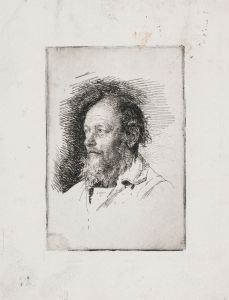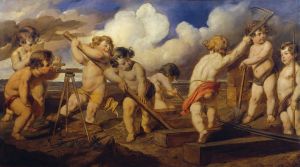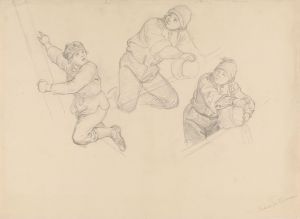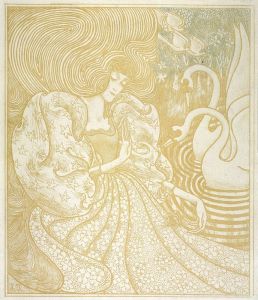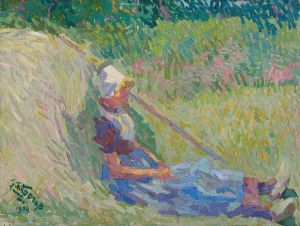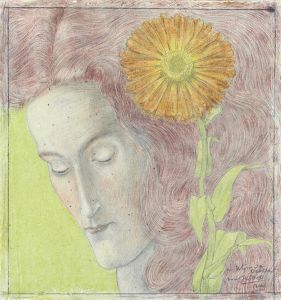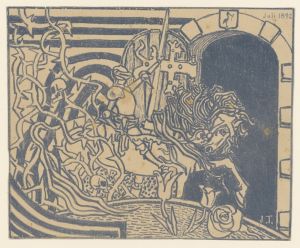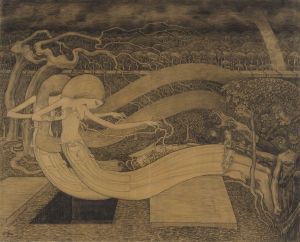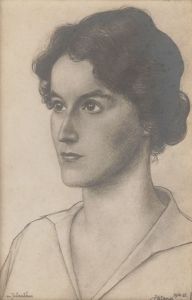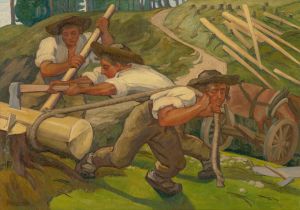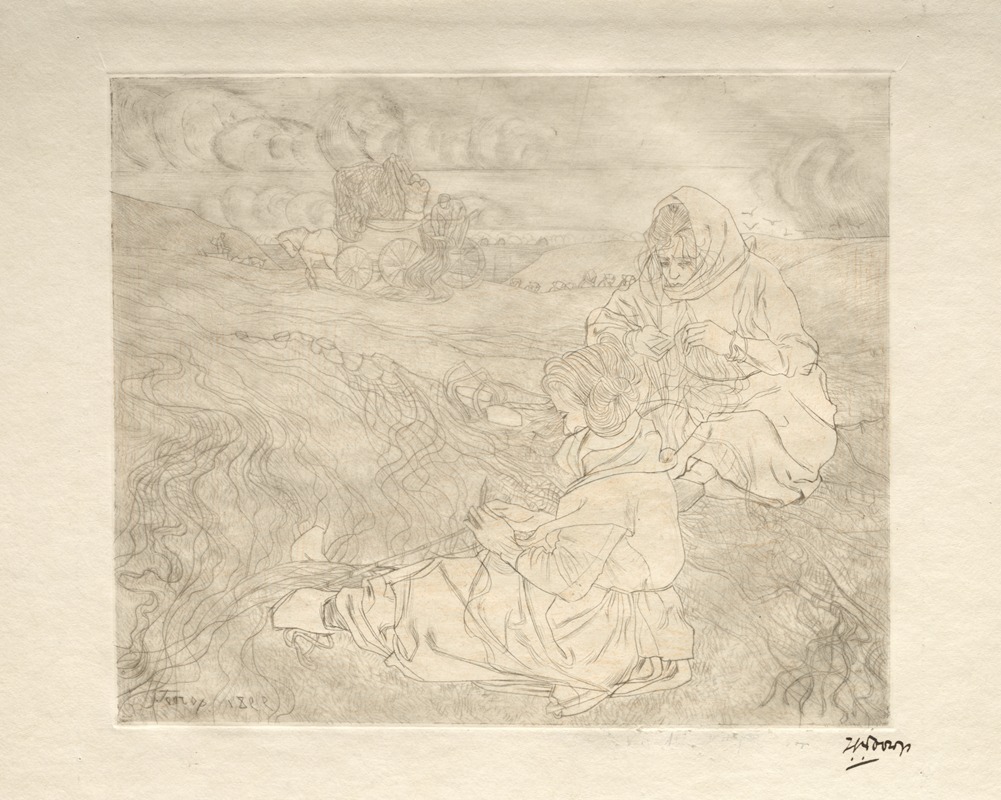
Net Menders
A hand-painted replica of Jan Toorop’s masterpiece Net Menders, meticulously crafted by professional artists to capture the true essence of the original. Each piece is created with museum-quality canvas and rare mineral pigments, carefully painted by experienced artists with delicate brushstrokes and rich, layered colors to perfectly recreate the texture of the original artwork. Unlike machine-printed reproductions, this hand-painted version brings the painting to life, infused with the artist’s emotions and skill in every stroke. Whether for personal collection or home decoration, it instantly elevates the artistic atmosphere of any space.
Jan Toorop's "Net Menders" is a notable work by the Dutch-Indonesian artist, Jan Toorop, who was an influential figure in the Symbolist movement of the late 19th and early 20th centuries. Born in 1858 in Purworejo, Java, then part of the Dutch East Indies, Toorop moved to the Netherlands at a young age and became a central figure in the European art scene. His work is characterized by a unique blend of Symbolism, Art Nouveau, and later, a more realistic style.
"Net Menders," created in 1889, is one of Toorop's early works that reflects his interest in depicting everyday life and the working class. The painting captures a group of women engaged in the labor-intensive task of mending fishing nets, a common activity in coastal communities. This subject matter is indicative of Toorop's fascination with the lives of ordinary people and his ability to portray them with dignity and respect.
The composition of "Net Menders" is notable for its detailed depiction of the figures and their environment. Toorop's use of line and form is meticulous, capturing the intricate patterns of the nets and the focused expressions of the women. The painting is imbued with a sense of calm and concentration, reflecting the repetitive and meditative nature of the work being performed. The figures are arranged in a harmonious manner, emphasizing the communal aspect of the task.
Toorop's style in "Net Menders" shows the influence of the Hague School, a group of artists known for their realistic depictions of rural and urban life in the Netherlands. However, Toorop's work also hints at his later Symbolist tendencies, with an emphasis on mood and atmosphere over strict realism. The subdued color palette and soft lighting contribute to the painting's serene and contemplative quality.
Throughout his career, Toorop experimented with various artistic styles and techniques. After his early realistic works, he became associated with the Symbolist movement, producing works that were more abstract and filled with allegorical content. His later adoption of Art Nouveau elements is evident in his use of flowing lines and decorative motifs.
"Net Menders" remains an important piece within Toorop's oeuvre, illustrating his early mastery of technique and his interest in social themes. The painting is part of the collection of the Rijksmuseum in Amsterdam, where it continues to be appreciated for its artistic and historical significance.
Jan Toorop's legacy is marked by his ability to bridge different artistic movements and cultural influences, creating a body of work that is both diverse and cohesive. "Net Menders" is a testament to his skill as an artist and his sensitivity to the human condition, capturing a moment of quiet industry with grace and precision.





